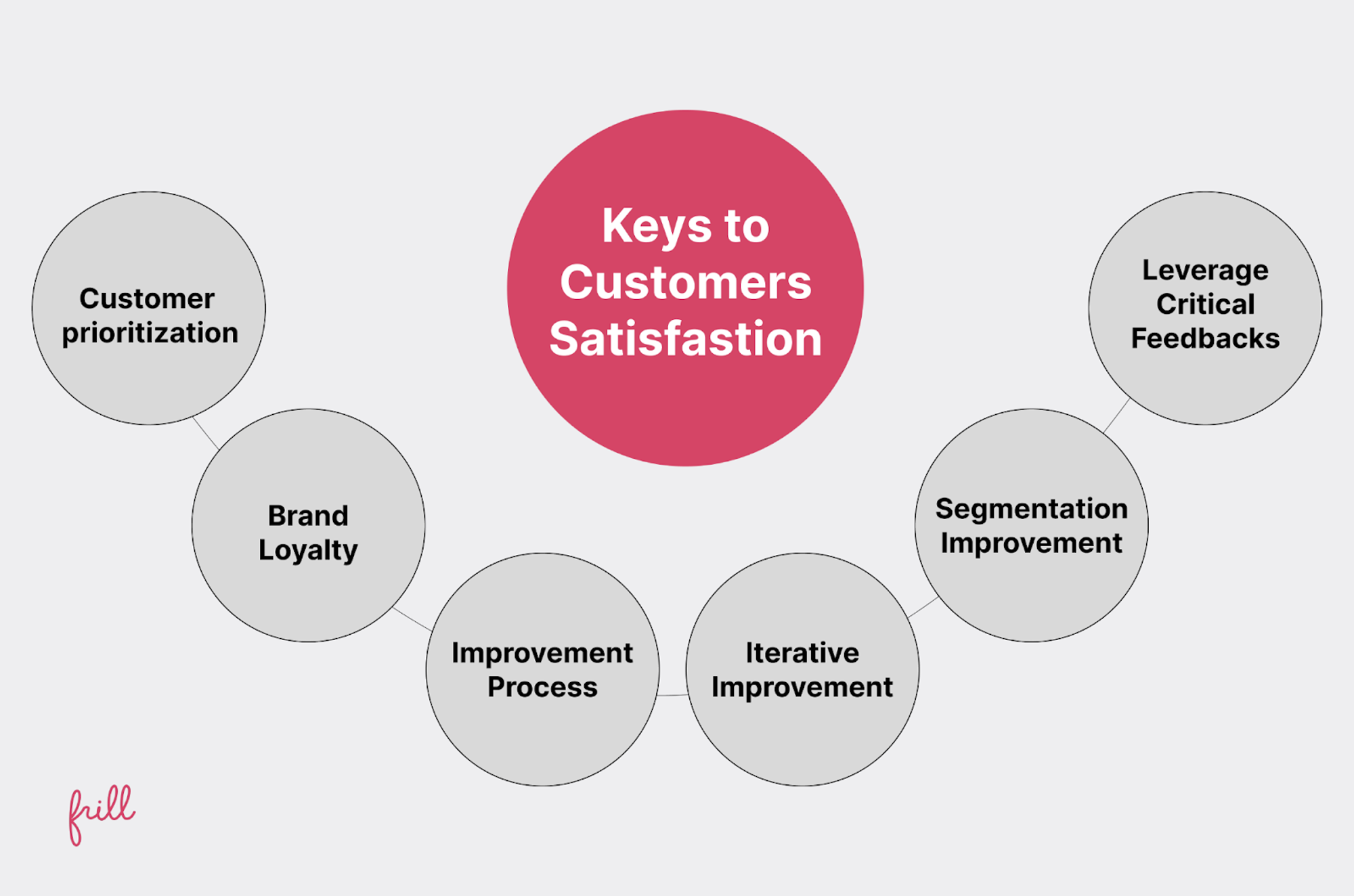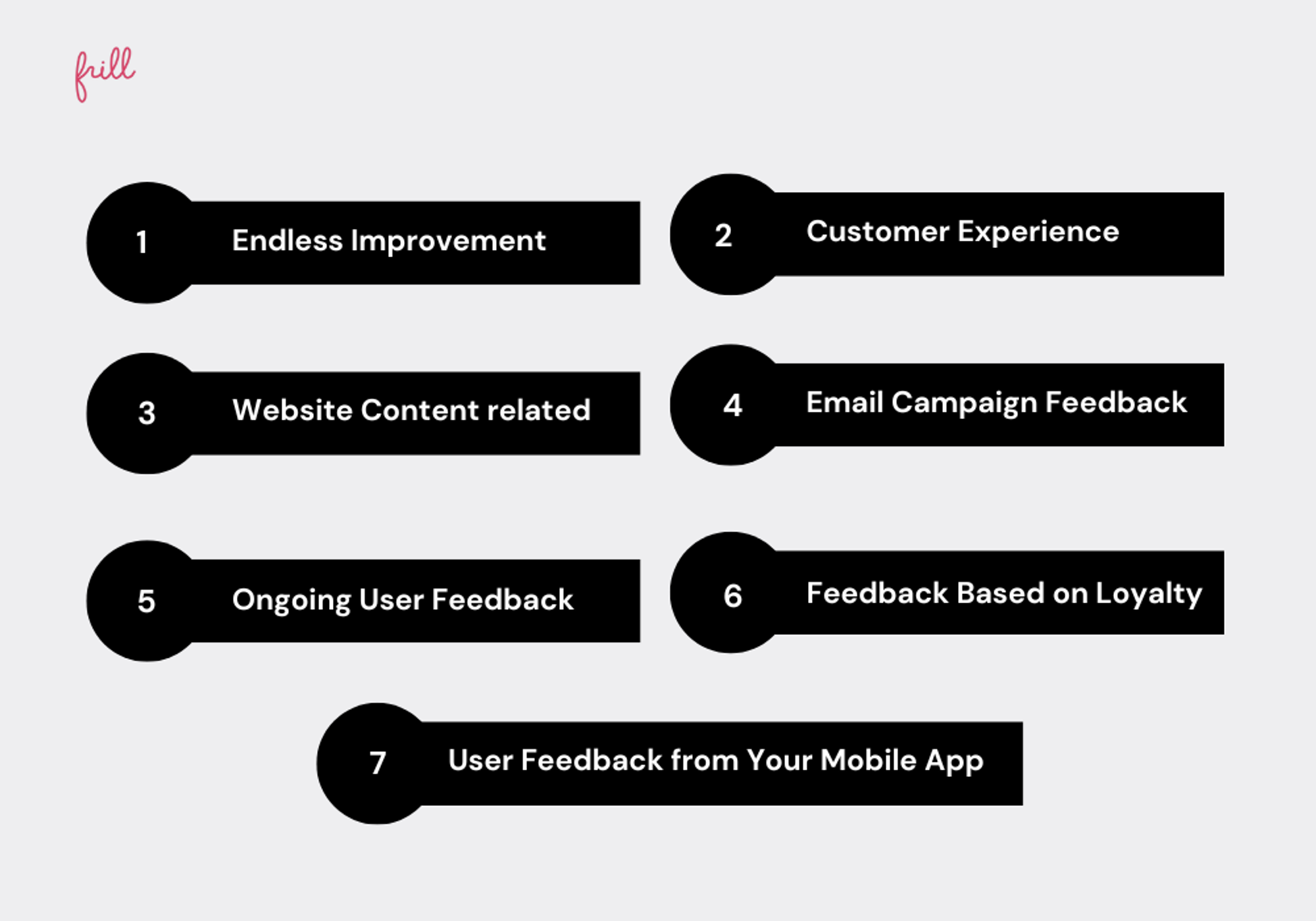Why Is User Feedback Crucial for SaaS Businesses
Last updated on Thu Aug 01 2024
Without a doubt, user feedback, AKA user experience or UX feedback, is a must for success in your SaaS venture, and any business, for that matter. Notably, SaaS developers and engineers must understand that they’re in a ruthlessly competitive market. Their existing and potential customers are spoilt for choice.
Personal remarks and criticisms can provide insight into how people utilize your product in their daily lives.
What Makes User Feedback So Essential?

Show the Importance of the Customer
Customer feedback always matters, but how you choose to utilize it also carries weight. Building a customer-centric business culture should be one of your top priorities.
Brand Loyalty
User feedback is incredibly significant in establishing brand loyalty. If customers see your company implementing positive changes, they'll react positively. It helps you build brand loyalty, creating an emotional bond to your brand and enhancing enjoyment of your product(s).
Improvement Process
The UX feedback you receive from your customers is likely to enhance your design. Companies can compare and contrast competitors’ price points, steering your journey towards a more customer-focused product process.
Iterative Improvement
Remember, product improvement is an iterative process. You and your development team have likely been immersing yourselves in your product for quite some time. But this isn’t the case with your customers, which precisely makes UX feedback so pivotal. Strive to make continuous enhancement a distinguishing characteristic of your build, not just a one-time event. Product improvement is an ongoing task.
Improvement in Segmentation
User feedback can help you identify the individual segments or groups within your target audience. Here's an example: You could be reaching a certain demographic more effectively than you originally thought. Accumulating, analyzing, and implementing usage feedback can help you continually meet your customer needs and possibly uncover new markets for your product. Learn how to analyze and implement feedback effectively.
Leverage Negative and Neutral User Feedback
It's common to react poorly to negative feedback. However, it can be priceless in aiding your company to adapt and evolve. Learning to accept critical feedback with grace and employing its lessons to your advantage is crucial in building a sound user feedback mindset.
User Feedback Collection in the Product Development Lifecycle
Collecting feedback from users is essential at all times, with special emphasis on the ideation stages and the beta testing phase. Gathering user feedback during the development and testing processes helps your team design a more tailored and user-friendly product.
Stage 1: Pre-Product
In the early days, your product is just an idea. Maybe you spot an unmet need in the market, or perhaps you witness a company selling goods or services, but you have an idea to do it better. Your route to transforming a decent idea into a terrific one involves obtaining feedback at the early stages of the development process. This might challenge developers and product managers, but it helps to define and refine your target market.
Stage 2: Development of New Features
As you and your team get to work and begin to build, it’s beneficial to continue consulting the test customers who participated in your interviews and focus groups. You can display initial wireframes or mockups of the product to your potential customers and gauge their response. As the product takes shape and features evolve, your beta testers can provide valuable usability feedback. At this stage, you can discover what features testers would like to see or find useful. Mock customers can provide feedback on how intuitive a product is and how it meets their needs. For comprehensive guidance, check out our feature prioritization matrix.
Stage 3: Idea and Design for Roadmap
One of the critical aspects of product design is creating a roadmap for how you and your team will collect and implement customer feedback. Plan not only for the beta testing stages but also for the actual product launch. Use feedback like personal comments to your advantage and incorporate these critiques early on. But be aware of your business needs; sometimes they must come before the ideal product. Learn more about creating a product roadmap.
Stage 4: Endless Improvement
In reality, product development doesn't end even after launching a product; you'll constantly be adjusting it, aiming for continuous improvements. It’s crucial to develop techniques to receive constant feedback to remain in touch with your customers. Ideally, your product evolves alongside their needs, not trailing behind. Feature prioritization becomes increasingly crucial.
Types of User Feedback

We hope we've made a persuasive argument for why generating and collecting user feedback should matter to you. Now let's explore strategies for collecting feedback.
1. Proactive User Feedback
This means the company or development team actively seeks out user experiences and opinions. Examples of proactive feedback methods include NPS surveys, CES, Point of Conversion, and one-on-one questionnaires centered on user experience.
2. Customer Experience Feedback
Customer experience (CX) feedback can be used to not only improve a product but also define a business and create a sense of unity among employees. It can also attract new clientele, acting as a kind of referral business channel. Customers are drawn to intuitive, easy-to-use products and services and will devote time to researching a product and reading reviews, which you can influence through a UX mindset. Discover more about customer feedback software.
3. User Feedback Related to Website Content
Surveys on your website can help analyze your website traffic and provide a way for customers to interact with another aspect of your product. Before deciding on the tool for website feedback, you should consider whether the customer can easily find relevant information, find value in the website content, and trust the website content.
4. Email Campaign Feedback
Email campaigns that solicit customer opinions can be quite effective, making your business appear customer-centric and letting users know that you care. It's another way to engage in a one-on-one conversation with an individual and helps to get user experience feedback questions answered.
5. Ongoing User Feedback
Many companies neglect to seek ongoing user feedback. While most businesses offer a feedback platform or services such as email or live chat, the active search for customer feedback is often overlooked. Allowing your customers to supply UX feedback at any time, not just when asked, is a crucial component of a successful business. Check out our ultimate guide to SaaS feedback.
6. Feedback Based on Loyalty
Your loyal customers play a crucial role in growing your business. Strive to learn all you can about these continuous users. Such feedback is extremely valuable as it offers you insights into what you are doing correctly and the value you are delivering to consumers.
7. User Feedback from Your Mobile App
Consider leveraging your mobile app to collect feedback. Many people regularly use their phones, making this an effective method. Plus, users often view it as more interactive.
Success Metrics for User Feedback
Here are a few methods for collecting user feedback and creating a platform for user voice reviews. They include Net Promoter Score (NPS), Goal Completion Rate (GCR), Customer Effort Score (CES), and Website Customer Satisfaction Score (CSAT).
The Right Way to Utilize User Feedback
After you've successfully implemented a few feedback methods and your users start responding, the question becomes, "What do you do with all this incoming data?" Gathering data is one matter; analyzing it to uncover relevant UX data is a different ballgame. At this point, you may need external assistance.
Post-analysis, you'll want to focus on the learning that your feedback provides. Sort your feedback data by various metrics like age, gender, customer status, etc. Questions that aid in implementing feedback include "Which issues are important to which demographic?" and "Are these changes manageable?"
Handy Tips
Getting feedback can sometimes be challenging, but there are ways to maximize the chances of receiving it. Always ask: Incorporate user experience feedback queries from your product lifecycle's onset. Offer users multiple opportunities to share their thoughts, including when they stop using the product. Consider contests and rewards as incentives for users who provide feedback. Check out some feedback form templates to get started.
Collecting feedback has never been simpler, and we hope you realize this after reading this article. Remember, you're shaping your product for a future market. No matter how thorough your market research, your development team won't be able to anticipate everything. Getting consistent, user-based feedback is critical for keeping in touch with your customers.